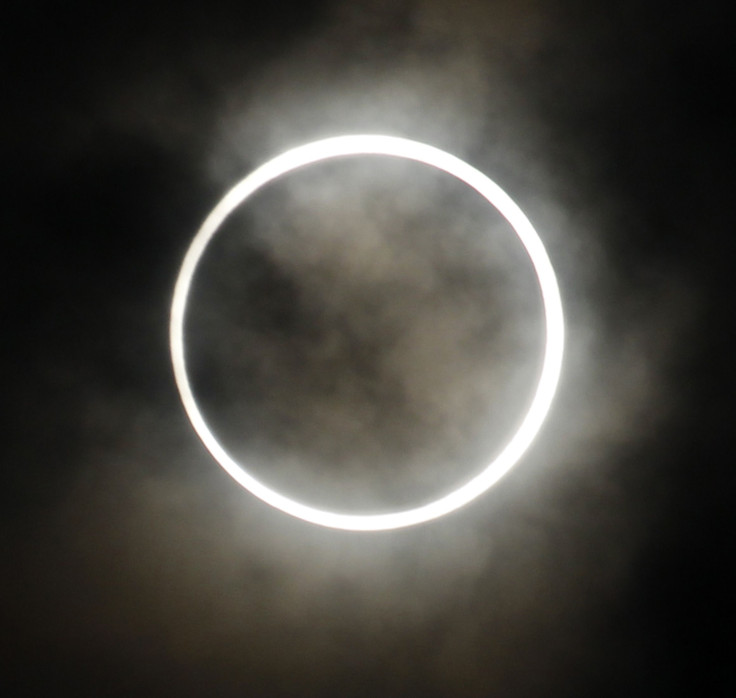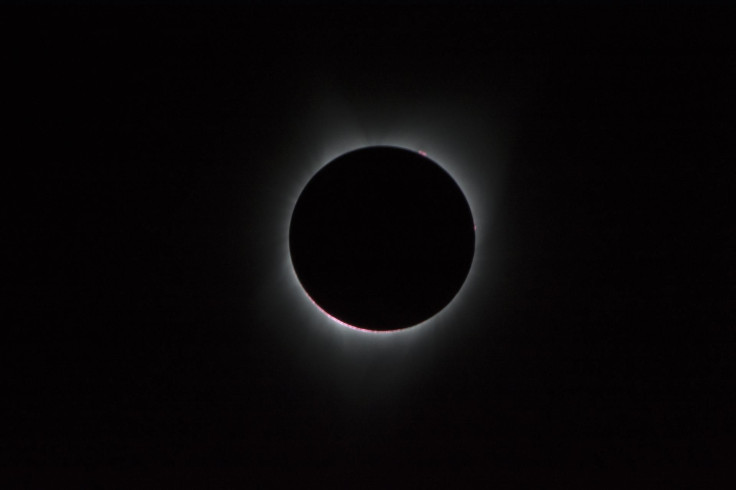What Are Atmospheric Bow Waves? Solar Eclipses Create Ripples In Earth’s Ionosphere

In another example of how new technology can help further science, researchers have finally been able to verify the occurrence of a phenomenon that was theorized about 40 years ago, in the 1970s. It was an effect of solar eclipses on Earth’s atmosphere, where the shadow of the moon creates ripples like a boat does as it moves through water.
These atmospheric bow waves were observed in the ionosphere — a wide part of the planet’s atmosphere that extends from about 100 kilometers to about 1,000 kilometers above the surface — during the Aug. 21 solar eclipse over the United States. The data for the observations was collected using a network of about 2,000 Global Navigation Satellite System receivers across the country.
A study based on the observations first appeared online Dec. 4 and was published in the journal Geophysical Research Letters on Tuesday. Titled “Ionospheric Bow Waves and Perturbations Induced by the 21 August 2017 Solar Eclipse,” the paper’s authors were five researchers from the MIT Haystack Observatory in Massachusetts, and one from the University of Tromsø, Norway.
“We show the first unambiguous evidence of ionospheric bow waves as electron content disturbances over central/eastern United States, with ∼ 1 h duration, 300 – 400 km wavelength and 280 m/s phase speed emanating from and tailing the totality region,” they wrote in the paper.

To explain that in English, as the shadow of the moon travels across Earth, solar energy received by particles in its path is reduced, which rapidly cools the area below. But the lunar shadow is moving faster than the speed of sound and cooled particles get heated again pretty fast as soon as the shadow moves away. At altitudes where water vapor and ozone can efficiently convert the sun’s ultraviolet radiation to heat, the sudden temperature change was expected to cause bow waves. And that is exactly what the researchers found.
Shun-Rong Zhang from Haystack Observatory, who was the corresponding author of the paper, told Live Science the ripples were of two types — bow and stern — that happen at the front and the back of ships moving through water. Noting that the waves weren’t dangerous in any way, he told the website: “Similar bow waves, including stern waves, occur also when airplanes travel through the air at the speed of sound. It is an object of mainly scientific interests.”
“This study reveals complex interconnections between the Sun, Moon, and Earth's neutral atmosphere and ionosphere and demonstrates persistent coupling processes between different components of the Earth's atmosphere, a topic of significant community interest,” the researchers wrote.
However, there was another study published in September 2011, also in Geophysical Journal Letters, based on observations following the July 22, 2009, solar eclipse over East Asia, which detected the occurrence of both bow and stern waves in the atmosphere in the eclipse’s wake. But that study’s findings were indicative only.
© Copyright IBTimes 2024. All rights reserved.





















